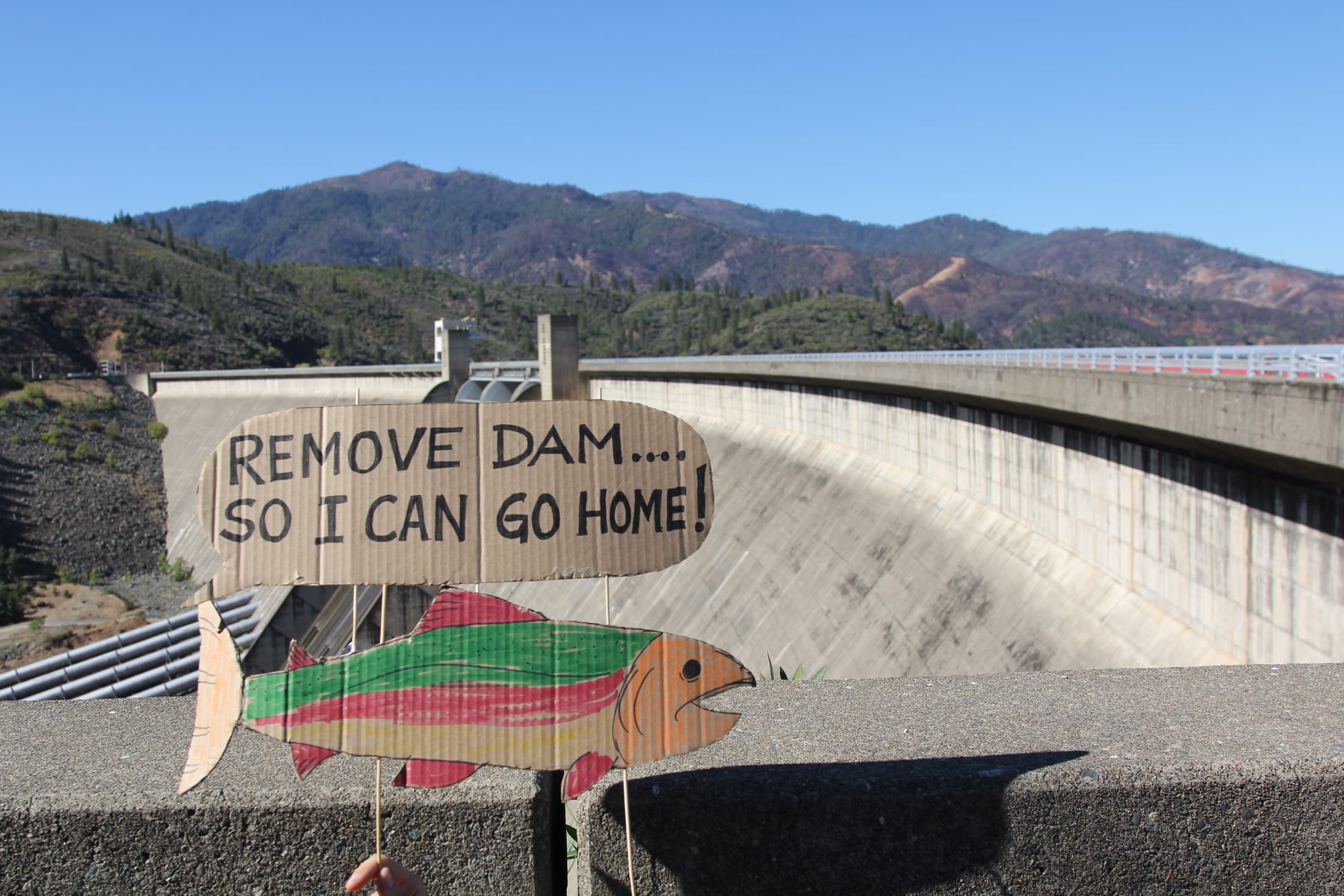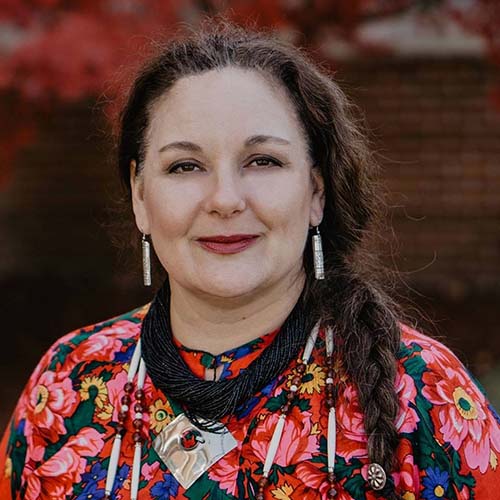
- Details
- By Nanette Kelley
SACRAMENTO, Calif. — Due to COVID-19 precautions, Run4Salmon, a 300-mile trek led by Winnemem Wintu Chief Caleen Sisk and the Run4Salmon community to restore salmon runs, protect waters and protect Indigenous lifeways has gone virtual.
The Sacramento River winter-run Chinook Salmon have been unable to return to their home in the Winnemem Wintu’s ancestral watershed since Shasta Dam was built 75 years ago. In California, climate change, dam projects and large agricultural irrigation projects have pushed the salmon to the verge of extinction.
Speaking on the podcast “Stay Human” on July 28, members of the Winnemem Wintu tribe discussed their history including how the loss of salmon is parallel to the loss of their people. Efforts to reintroduce the salmon (from where a fish hatchery shipped them decades ago) is crucial to the recovery of both. Currently, a genetically matched group from New Zealand is being tested at UC Davis, and to date their Salmon Restoration Plan fundraiser has raised $116,000 of their $170,000 goal.
The Run4Salmon “prayerful journey” follows the historical 300-mile-long salmon run. In years past, most participants walked, ran, biked or traveled by boat, singing, dancing and praying from the Sacramento-San Joaquin Delta to the Winnemem (McCloud River).
 Event poster via Run4Salmon. However, this year’s event was organized around COVID-19 concerns.
Event poster via Run4Salmon. However, this year’s event was organized around COVID-19 concerns.
“As COVID-19 presents new challenges in our daily lives and social distancing measures remain in place, we want to inform you that our Run4Salmon prayer will also abide by the state of California’s safety measures recommended to the general public in attempts to decrease the spread of the virus,” organizers said in a statement.
Virtual events began July 17 and have included online film screenings, discussions, live prayer sessions in Machoopda territory along the Sacramento River, and access to curriculum is provided for students, parents and educators in the form of mini online lessons. The final events are as follows:
- On July 29 and 30, both the “Dancing Salmon Home” documentary film and “Standing on Sacred Ground” documentary film will be available to watch online for free and live on the Run4Salmon Facebook page.
- On July 31 from 7-9 p.m. PST the livestream panel discussion with Chief Caleen Sisk and others includes a report on the efforts to bring salmon stocks from New Zealand, and the federal push to raise Shasta Dam.
- The completion prayers by the water in Ohlone territory will be livestreamed on their Facebook page on Aug. 1 and 2.
Virtual prayer participants can post their waterways prayers and photos using #Run4SalmonWater.
More Stories Like This
Native News Weekly (August 25, 2024): D.C. BriefsUS Presidents in Their Own Words Concerning American Indians
Montana County Redraws District After Settlement to Ensure Chippewa Cree Votes Count
Tunica-Biloxi Council Member Named to Tribal Leadership Foundation
Ethics Complaint Alleges Former Navajo Nation Chief of Staff Accepted Gifts From Contractor
Help us defend tribal sovereignty.
At Native News Online, our mission is rooted in telling the stories that strengthen sovereignty and uplift Indigenous voices — not just at year’s end, but every single day.
Because of your generosity last year, we were able to keep our reporters on the ground in tribal communities, at national gatherings and in the halls of Congress — covering the issues that matter most to Indian Country: sovereignty, culture, education, health and economic opportunity.
That support sustained us through a tough year in 2025. Now, as we look to the year ahead, we need your help right now to ensure warrior journalism remains strong — reporting that defends tribal sovereignty, amplifies Native truth, and holds power accountable.
 The stakes couldn't be higher. Your support keeps Native voices heard, Native stories told and Native sovereignty defended.
The stakes couldn't be higher. Your support keeps Native voices heard, Native stories told and Native sovereignty defended.
Stand with Warrior Journalism today.
Levi Rickert (Potawatomi), Editor & Publisher

